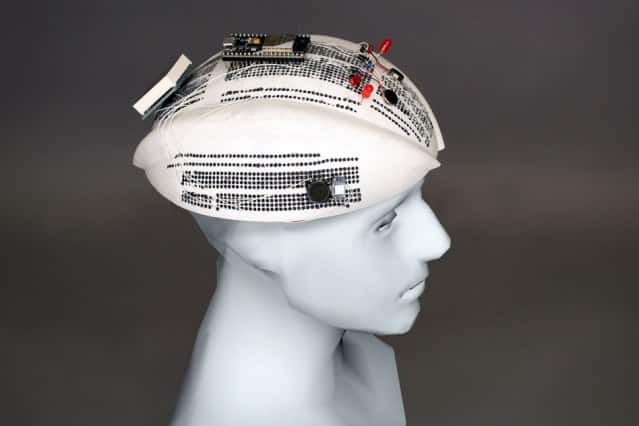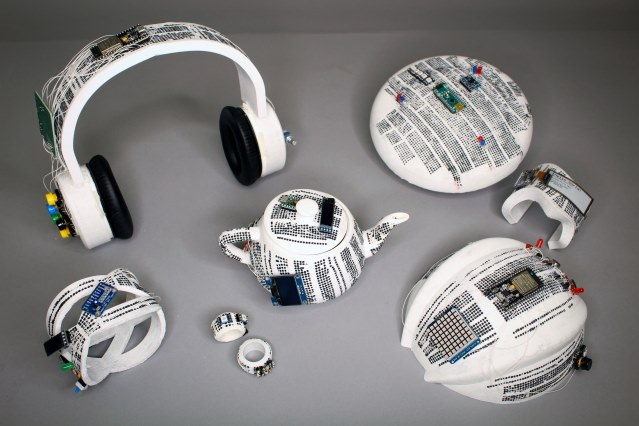3D printing technology initially appeared in the manufacturing field as a rapid prototyping manufacturing technology. With the development of 3D printing equipment, materials, and software, the role of 3D printing technology has changed from prototyping to production technology. But especially for plastic 3D printing technology, the status in product prototype manufacturing has not diminished. In return, 3D printing technology used for prototyping has gained in terms of color, detail, material functionality, and cost savings.
MIT Media Lab has developed a technology that can integrate a test circuit board with a 3D printed physical prototype of smart wearable and consumer electronics products. This technology gives new capabilities to 3D printed prototypes. In addition to design appearance testing, it is also possible to perform rapid testing of product electronic functions. This technology will further enrich the function of the rapid prototyping of 3D printing of electronic products.
The platform widely used in electronic prototype manufacturing is the “breadboard”. It’s a new technology invented by researchers at the Massachusetts Institute of Technology, which can directly integrate the test circuit board onto the physical prototype, the purpose is to provide a faster, easier way to test circuit functions, you can achieve interaction between smart devices and flexible electronics in the product development stage.

The traditional test circuit board is a regular rectangular board with many pinholes drilled on the surface, with metal connections and contact points between the holes. Engineers can insert components of electronic systems (from basic circuits to complete computer processors) into the pinholes they want to connect. Then, quickly perform tests as needed, then rearrange and retest components according to the outcome.
But the test circuit board has maintained the same shape for decades, and the appearance and touch of smart wearable devices are rapidly iterating. Generally, engineers need to test the circuit on the traditional test circuit board first, and then install it on the prototype. If the circuit needs to be modified, return to the circuit board for testing. When you encounter the problem again, the process needs to be repeated.
The MIT research team has developed a new type of “curve board” (CurveBoards) for the above problems. As the name suggests, this circuit board will no longer be a rectangular board like a traditional circuit board, but has a 3D shape. It can also be said that this is a 3D printed prototype integrated with a test circuit board, which has both the appearance of an electronic product and the structure and function of the test circuit board on the surface.
“The core technology in CurveBoards is a custom design editing software. This software can automatically prototype electronic products and automatically map all pinholes evenly to the entire object. The user then selects the connection channel automatic or manual layout. In the automatic option, users only need to click the button to explore different connection layouts in all pinholes. In the manual option, you can use interactive tools to select the pinhole group and indicate the connection type between them. Finally, the design will be exported to a file for 3D printing.”
As the research team described in the paper, the curved circuit board “retains the look and feel of electronic products” while allowing designers to try component configuration and test interactive scenarios during prototype iterations.
After uploading the 3D object, the software expresses its shape as many tiny “small squares”, each of which has its own parameters. In this way, there is a fixed spacing between the small squares. A conical pinhole will be placed at each point where the square corner touches. In addition, certain geometric techniques ensure that the selected channels will connect the required electrical components without crossing each other.
In the R&D process of the technology, researchers test the soft, durable, and non-conductive silicone material, 3D printed curve circuit board. But in order to form connection channels, they also developed a customized conductive silicon material, which was injected into the pinholes and then flowed through these channels after printing. The material is a mixture of silicone resins. The purpose of developing this material is to achieve the smallest electrical resistance and thus play a role in the manufacture of various types of electronic devices.
In order to verify the curved circuit board, the researchers 3D printed curved circuit boards for a variety of intelligent product prototypes, and installed electronic components on these prototypes. For example, headphones equipped with speakers and menu controls for music streaming; interactive bracelets with digital displays; teapots that can be equipped with small cameras; wearable e-book readers with flexible displays.
The ultimate goal of the research team in developing curved circuit boards is to achieve faster and better prototype manufacturing of electronic products. They verified the advantages of the CurveBoards prototype. The designers involved in the verification were divided into two groups: one group used a traditional square test circuit board and a separate 3D printed prototype; the other group used a 3D printed curve circuit board directly. Feedback shows that the curved circuit board is generally faster and easier to use.
The researchers said that compared with the traditional way of mounting a square test circuit board on the product’s appearance prototype, this 3D printing technology integrating the test circuit board and the prototype is designed to achieve “medium fidelity” electronic products rapid prototyping, especially when you need to test products and people interactively, is more suitable for using curved circuit boards.
The core software in this technology will continue to be optimized, and the researchers hope to design common templates for wearable electronic devices, such as hat and bracelet templates. With ready-made templates, designers can quickly test basic circuits and user interactions in the early stage when designing similar products. In addition, the researchers hope to completely move some early prototyping steps into the software, design, and circuit test on the 3D models generated by the software, and even allow user interaction. After many iterations, they can 3D print a more final curved circuit board.
It must be said that the curved circuit board developed by the Massachusetts Institute of Technology is extremely subversive. It changed the traditional circuit board testing which maintains the “stereotype image” for many years. With the help of 3D printing technology, it can achieve the advantages of complex design and realize the test circuit. The “conformal” design of the board also gives new circuit test functions to the 3D printed prototypes of electronic products. In product development, the research team used FDM 3D printers.


